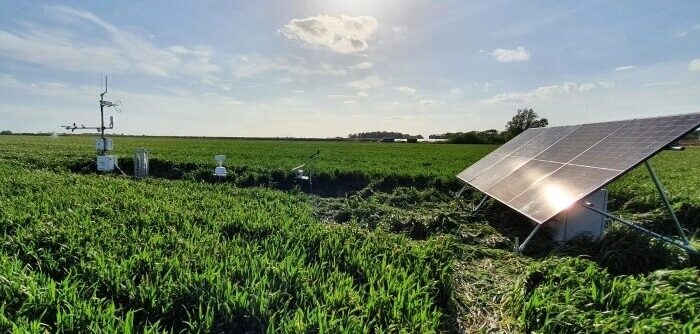The UK Centre for Ecology & Hydrology (UKCEH) has deployed a series of off-grid power systems to support the measurement of greenhouse gases in the most remote regions of the country.
UKCEH monitors the exchange of greenhouse gases, energy and water between the land surface and the atmosphere using a mix of eddy covariance flux towers, greenhouse gas auto-chambers and weather stations, with a continuous power draw ranging from 1-3A.
After a series of evaluations, UKCEH decided on a bespoke off-grid solution from Leading Edge Power to run the equipment. The system was tailored to the research institute’s specific needs and was robust enough to withstand long periods of deployment in harsh environments while being easy to install in the field.
Power is generated from solar panels and, depending on the location, Leading Edge’s own robust wind turbines, with the resulting electricity stored in deep-cycle absorbent glass mat (AGM) batteries housed in IP65 enclosures.
Dr Ross Morrison, a biometeorologist at UKCEH, said, “Our instrumentation is mostly in remote and inaccessible locations, so getting things in and out is difficult. Working with Leading Edge has been a positive experience in helping us find a solution for powering scientific equipment in remote locations and a solution that needs to be reliable and continue producing power throughout the whole year.”
Each system can be remotely monitored via a web interface to check how It is performing, with the ability to receive alarm signals and change system settings. The enclosures also contain the control equipment, isolation switches, DC-DC conversion, fuses and low-voltage disconnect.



